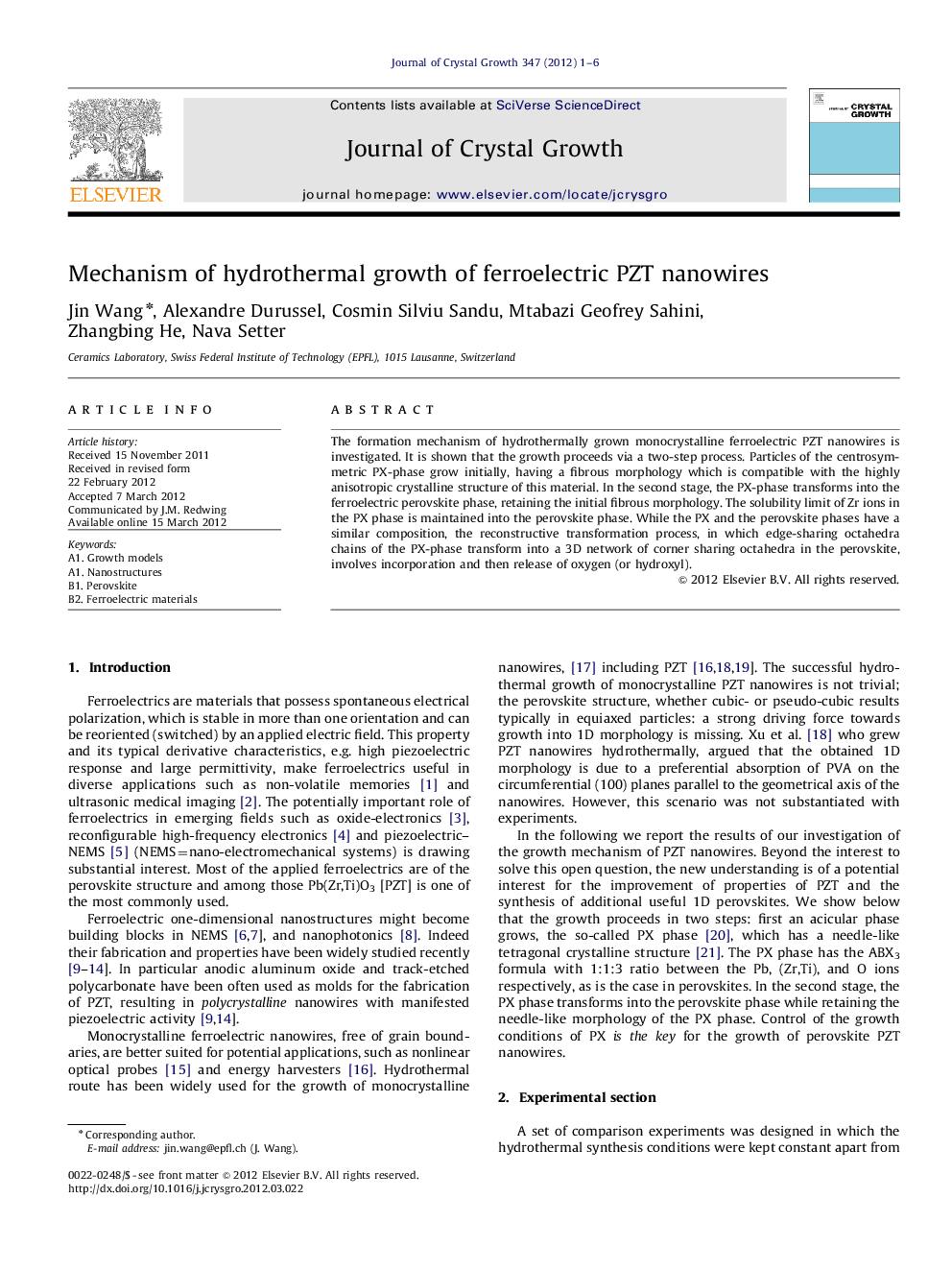| Article ID | Journal | Published Year | Pages | File Type |
|---|---|---|---|---|
| 1791631 | Journal of Crystal Growth | 2012 | 6 Pages |
The formation mechanism of hydrothermally grown monocrystalline ferroelectric PZT nanowires is investigated. It is shown that the growth proceeds via a two-step process. Particles of the centrosymmetric PX-phase grow initially, having a fibrous morphology which is compatible with the highly anisotropic crystalline structure of this material. In the second stage, the PX-phase transforms into the ferroelectric perovskite phase, retaining the initial fibrous morphology. The solubility limit of Zr ions in the PX phase is maintained into the perovskite phase. While the PX and the perovskite phases have a similar composition, the reconstructive transformation process, in which edge-sharing octahedra chains of the PX-phase transform into a 3D network of corner sharing octahedra in the perovskite, involves incorporation and then release of oxygen (or hydroxyl).
► The monocrystalline ferroelectric PZT nanowires form by acicular PX-phase. ► Solubility limit of Zr in PX is maintained in perovskite phase. ► The PX–perovskite transformation involves most-likely hydroxyls incorporation and release.
